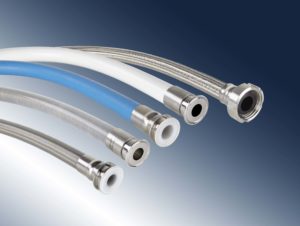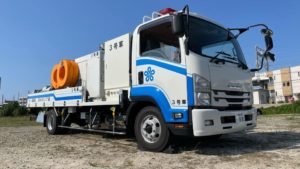Water Management at the Mátrai Power Plant Tsurumi Stays Strong
The RWE subsidiary Mátrai Erőmű Zrt, operator of the second largest power plant in Hungary, is fully satisfied with the change of supplier for its drainage constructors pumps.
RWE-Power operates the plant together with EnBW and the Hungarian electricity company MVM, which hold minor shares. With an annual production of 6260 GWh of 950 MW of installed performance, the power plant has an approximate 18 per cent share of the country’s electricity production. Brown coal is mainly burnt: 9 million tons of annual input comes from the opencast mines in nearby Visonta and Bükkábrány, which is 50 km away. The company group at the foot of the Mátri Mountains, east of Budapest, employs over 2000 workers.
Water management in Visonta poses a challenge, not least due to the coal – with a waste material ratio of 1:8 and proportion of sandstone. "We had to act in 2013," remembers Béla Hernádi, manager of Dewatering Division at Mátrai. "Pumps broke down every four weeks on average." Abrasion was considered to be the main cause. "The cost/profit calculation simply did not work out anymore." Brand name pumps from European manufacturers had been used. Mátrai replaced them completely without hesitation.
The Japanese manufacturer Tsurumi won the race and was selected. The company with its headquarters in Düsseldorf is also represented in Hungary. The experts visited the site and developed the water management system from scratch.
Several pumping stations were configured for appropriate three-step drainage of the mine. Submersible motor pumps of type LH622 were to take on the main load. Tsurumi had developed these for deep mines in an abrasion resistant design. This model with its 22 kW motor performance conveys 3750 l/min and manages discharge heights of up to 54 metres. Construction engineers created a good basis for long durability: Extremely resistant materials such as spheroidal cast iron GGG45 and grey cast iron GG20 for the casing, chromium cast iron for the closed vortex impeller and silicon carbide for the shaft seal in an oil bath are good examples of this. "Thanks to position-independent injection lubrication, even the difficult snore mode or dry operation, when water levels are low, do not present critical conditions for these pumps," underlines Birger Schmidt from the manufacturer s sales department.
Type 622 is a comparatively small model in the top-performing LH-design series (we are talking about an aggregate with a 350 kg dry weight and just 1.4 m in height). It is not the only one in Visonta, as the manufacturer installed other ranges with conveying capacities of 980 to 5375 l/min as required. These also include the "Slow Runner" from the KRS series, which has a motor with just 1450 rpm and is designed for minimum wear as far as the motor is concerned.
Today, more than three years after the refit, you can see the result of the measure. The pump system masters water management efficiently, so they say. But more importantly: All the supplied pumps are still running and only require moderate maintenance and repair, which in no way is comparable to the previous situation, says Hernádi. The current installation is certainly manageable: Only 16 pumps instead of the previous 31 pumps are needed for water management.




